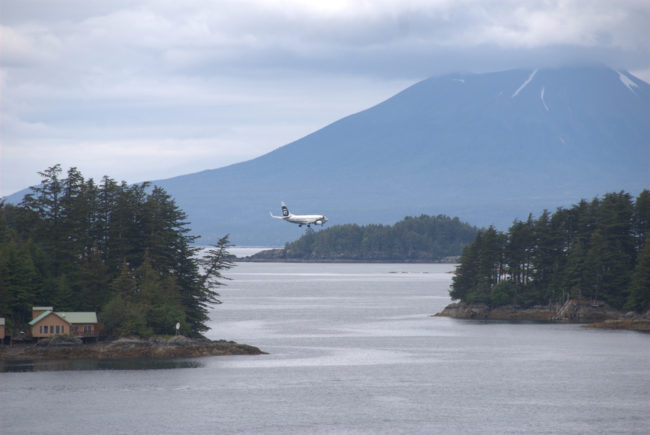
Alaska occasionally gets caught in federal rules that may work in Ohio, but not in Ozinkie. One such national policy that has been confounding airport managers and pilots may be close to at least a temporary fix for Alaska.
The Federal Aviation Administration has begun enforcing a 37-year-old policy that defines the clearance area for airport approaches. Obstacles in that glide path entering or leaving an airport must be dealt with, or the FAA says those airports will be closed to night or instrument flying.
Alaska Air Carriers Association executive director Joy Journay says that’s a big problem for Alaska:
“So you can come in when the weather is good, when it’s clear. You cannot fly with instruments which automatically means for these closures, they’re all down at night. That’s a very grave concern when you talk about medical evacuations because effectively, the closure at Haines, the closure for two weeks at Sitka, it basically meant if you needed to be airlifted out of there at night, an operator couldn’t come in.”
The obstacles may be trees, a new building, cell tower or in the case of one of Homer’s approaches, a dirt pile.
Journay says Association members have been frustrated by a lack of clarity as to which airports have problems and what the fix will be.
FAA Alaska region head Bob Lewis says about five of the more than 100 that originally had obstacle concerns are still being worked on, but he didn’t have a list.
Steve Hatter is the Deputy commissioner of aviation for the state department of Transportation. Hatter would only say the list is a moving target that changes daily.
“We’ve got a bunch of rural airports up in our Northern region and so that’s, we’re concentrating there right now,” he said.
Hatter says the state operates more than 250 airports and all have come up for review by the FAA. Hatter says they have whittled down the list of concern to a “hand full.”
“That said, they’re still going to continue reviewing approaches out into the future and that’s where we’re trying to get some help from them on when they schedule those reviews. So we’d like to push as many as we can out toward the spring time frame so that if we do discover that there is an obstruction problem, we’ve got reaction time and we can go address it in the spring and in the summer months,” Hatter said.
Hatter says the one size fits all national policy doesn’t work well in a state where 82 percent of the airports are not accessible by road. He says DOT is aggressively working on the issue with FAA.
“We simply can’t shut off access to our rural villages over the application of a safety standard that just doesn’t make sense and we need to make sure we can do medivac 24-7. We need to make sure people have the right ability to get in and out of those villages for whatever function they need.”
The Air Carriers Association’s Journay says Alaska’s congressional delegation has gotten involved and she’s hopeful there will be more clarity in coming days.